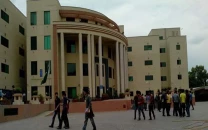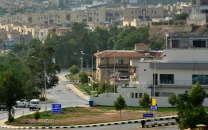Railways on road to recovery
It is unclear whether the new government has any concrete plan for the railways’ revival

Another major area contributing to the deficit — apart from the high wage bill — is the shortage of carriages and trains which would help raise its revenues. There are 458 locomotives, of which 321 are operational while 606 of the 1,819 passenger coaches have exceeded their useful life. Besides, some 10,000 of the 16,142 freight wagons are overage. Land lease and encroachment of the railway land is another source of loss in the revenue.
The enthusiasm of the PTI government, especially of Railway Minister Shiekh Rashid Ahmad, has given some positive results, with the deficit in the first seven months of this fiscal year — from July to February — being limited to Rs17.5 billion. Besides, the revenue, at Rs33.39 billion, is also Rs25 million more than what had been recorded in the same period last year.
It is unclear whether the new government has any concrete plan for the railways’ revival beyond announcing new trains and introducing some tourist trains. These have yet to prove as major revenue generators. An improved balance sheet may come through trimming the massive wage bill and exploring new avenues for revenue. Technology can be a great enabler in the context. It can help by automating certain processes — apart from making train bookings easier — and help with efforts to revive an ailing behemoth.
Published in The Express Tribune, April 30th, 2019.
Like Opinion & Editorial on Facebook, follow @ETOpEd on Twitter to receive all updates on all our daily pieces.














COMMENTS
Comments are moderated and generally will be posted if they are on-topic and not abusive.
For more information, please see our Comments FAQ